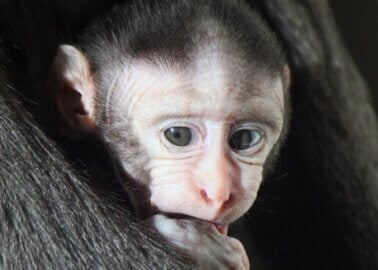EU Reports Reveal Catalogue of Suffering: More Than 20 Million Animals Languished in Laboratories
New figures published by the European Commission reveal that cruel and archaic experiments are rampant across the EU. In 2017, 9.39 million mice, rats, fish, dogs, and other animals were used for the first time in cruel experiments and other scientific procedures.
The creation and breeding of animals with debilitating genetic modifications accounted for an additional 1.28 million individuals. The UK was the most prolific user of animals in the EU, using an appalling 2.51 million animals in laboratories.

Here are the top three offenders for authorising experiments on animals in the EU in 2017:
- UK: 2.51 million animals
- Germany: 2.03 million animals
- France: 1.87 million animals
These shocking figures don’t even include the 12.6 million animals who were used as breeding machines in the cruel supply chain or who languished in cages without being used for experiments. In 2017 in the UK alone, 1.81 million animals either were bred for laboratory use but didn’t fit the “right” criteria at the “right” time or were killed so that their body parts could be used in experiments Animals are often seen as nothing more than furry test tubes – disposed of like unfeeling, inanimate objects when they’re no longer of any use to the experimenter.

What Can Be Done to Animals in EU Laboratories?
As long as an experimenter fills out the right paperwork, there are very few limitations on the types of atrocities that can be inflicted on animals in laboratories. Here are just three routine examples:
- Experimenters restrain dogs, rabbits, and guinea pigs and deliberately apply potentially toxic chemicals to their shaved skin or their eyes or force them down their throats. As a result, the animals may develop tumours, sustain burns, or go blind. If they survive until the end of the test, they are typically killed and their organs dissected.
- Experimenters kill millions of fish for toxicity tests. Different concentrations of potentially toxic chemicals are added to tanks of water containing fish, causing them to gasp, tumble, and writhe in pain, and some eventually die.
- In the forced swim test – once called the “behavioural despair test” – experimenters put mice, rats, guinea pigs, hamsters, or gerbils in inescapable containers filled with water. The panicked animals try to escape by attempting to climb up the sides of the beakers or even diving underwater in search of an exit. They paddle furiously, desperately trying to keep their heads above water. Eventually, they start to float.
These cruel experiments are bad science. They can’t reliably be used to predict what will happen in humans or to the environment, and attempting to do so can be dangerous.

Non-Animal Research Methods Are the Future
As more and more evidence shows that results from tests on animals are rarely applicable to human conditions and diseases, we’re seeing scientists, government agencies, and funding bodies shift their focus towards human-relevant, animal-free methods.
From techniques using human cells and tissues to computer simulations and organs-on-chips, animal-free science is providing the scientific revolution that’s essential to protecting humans, the environment, and animals.
One of the most recent achievements in the UK is the closure of the Wellcome Sanger Institute animal testing facility, announced in May 2019. The institute is moving away from experimenting on animals and towards using cell-based methods.
Promising progress has been made in other countries, too. The Dutch government has committed to ending the use of animals for toxicity testing by 2025, and in 2019, the US Environmental Protection Agency (EPA) announced plans to stop funding and requesting tests on mammals by 2035. PETA US first put animal rights on the EPA’s agenda 20 years ago, and while we wish animal tests would stop now – or had never started – this is the first time a US regulatory agency has made such a commitment.
For institutions to stick to these admirable commitments, significantly more resources must be devoted to the development and adoption of animal-free methods.
What Next?
We’re calling for the UK government to commit to phasing out all experiments on animals and redirecting resources towards superior, non-animal tests. Now that the UK has withdrawn from the European Union, it’s essential that our leaders consider the implications for animals in laboratories. For example, we may see a sharp increase in the duplication of cruel tests on animals for separate EU and UK legislation.
The UK must justify its reputation as a nation of animal lovers and establish a strategy to end experiments on animals.



